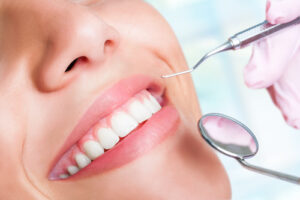Gum Treatment
 Periodontal disease is another name for what you may term “gum disease.” Periodontal disease is a gum infection that, if left untreated, can result in the loss of the tissues that support your teeth. Plaque, a clingy bacterial film that regularly builds on teeth, is the culprit. Plaque may be eliminated by daily flossing and twice-day brushing. Plaque can cause your gums (gingivae) to peel away from your teeth, creating pockets where further germs can grow if it is not removed. Along with hardening into calculus along and under your gums, plaque that is not removed also does.
Periodontal disease is another name for what you may term “gum disease.” Periodontal disease is a gum infection that, if left untreated, can result in the loss of the tissues that support your teeth. Plaque, a clingy bacterial film that regularly builds on teeth, is the culprit. Plaque may be eliminated by daily flossing and twice-day brushing. Plaque can cause your gums (gingivae) to peel away from your teeth, creating pockets where further germs can grow if it is not removed. Along with hardening into calculus along and under your gums, plaque that is not removed also does.
Plaque removal without a dentist’s assistance is challenging because of the pockets and hard calculus, and periodontal disease may result. Periodontal disease may harm the bone as well as the tissues that support your teeth if left untreated.
Signs of Gum Disease
The three symptoms of gingivitis include bleeding, swollen, or red gums (the first stage of periodontal disease). When brushing and flossing, you will see blood. In addition, you’ll see that the gums are dark red rather than pink as they should be. If treated at an early stage with antibiotics or planning and scaling, gingivitis is curable.
Receding gums—If your gums are separating from your teeth or if there are spaces between your gums and teeth, this may be a warning indicator. Due to the gums’ loss of ability to shield the tooth root, sensitivity may result. Receding gums can lead to tooth discomfort and looseness as well.
Chronic bad breath— Bacteria causes bad breath. Infection of the gums indicates the presence of microorganisms.
Sensitive gums—Over time, the gums will become sensitive to touch.
If gum disease is not treated early on, it can progress to periodontal disease. Periodontal disease needs particular attention and treatment.
What will happen if i develop periodontal disease?
Symptoms of periodontal disease include
- Gums that are red and swollen and bleed easily (for example, when you brush or clean between your teeth);
- Gums that seem to have pulled away from the teeth;
- Constant bad breath;
- Pus between your teeth and gums;
- Teeth that seem to be loose or moving away from one another;
- Change in the way your teeth fit together when you bite;
- Change in the way your partial dentures fit.
Periodontal disease has many phases, ranging from gingivitis (the early stage) through periodontitis (advanced disease). Gingivitis can be identified by the red, puffy, and readily bleeding gums. With a professional cleaning and more consistent daily treatment at home, the condition may be reversed at this early stage. Using a specialized instrument, the dentist or dental hygienist will scrape away the plaque and calculus that have solidified along and beneath your gum line throughout the cleaning. Cleanings that penetrate further below the gum line are necessary for more severe cases of the illness.
How can i prevent periodontal disease?
To prevent periodontal disease:
- Brush your teeth twice a day
- Clean between your teeth with floss or another interdental cleaner once every day;
- Visit your dentist for a checkup and professional cleaning regularly;
- Show your dentist or dental hygienist how you brush and clean between your teeth and ask if you can make any improvements.
